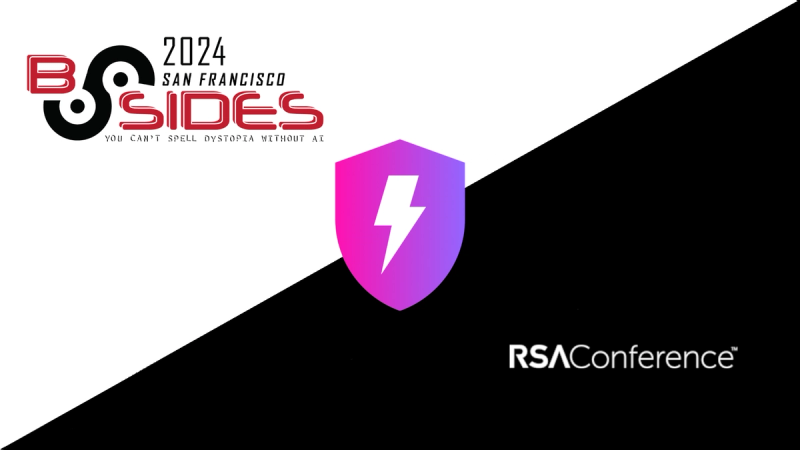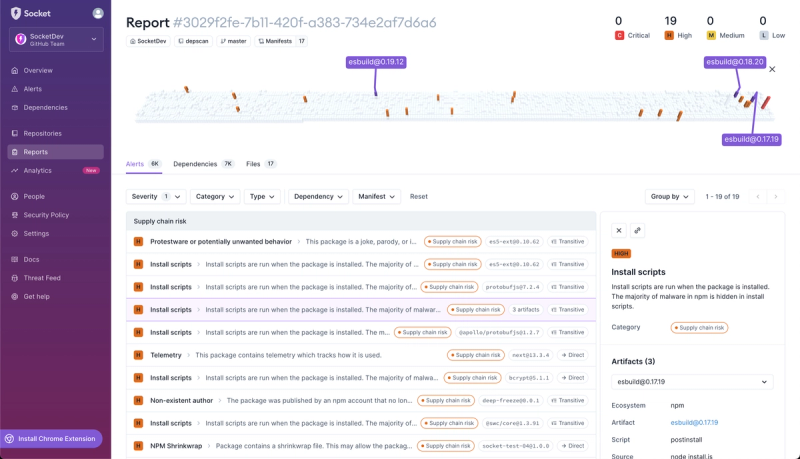
Company News
Connect with Socket at RSA and BSidesSF 2024
Come meet the Socket team at BSidesSF and RSA! We're sponsoring several fun networking events and we would love to see you there.
react-request-hook
Advanced tools
Weekly downloads
Readme

Managed, cancelable and safely typed requests.
# Yarn
yarn add react-request-hook axios
# NPM
npm install --save react-request-hook axios
import {RequestProvider} from 'react-request-hook';
import axios from 'axios';
// More info about configuration: https://github.com/axios/axios#axioscreateconfig
const axiosInstance = axios.create({
baseURL: 'https://example.com/',
});
ReactDOM.render(
<RequestProvider value={axiosInstance}>
<App />
</RequestProvider>,
document.getElementById('root'),
);
// User Profile component
function UserProfile(props) {
const [profile, getProfile] = useResource(id => ({
url: `/user/${id}`,
method: 'GET'
})
useEffect(() => getProfile(props.userId), [])
if(profile.isLoading) return <Spinner />
return (
<ProfileScreen
avatar={profile.data.avatar}
email={profile.data.email}
name={profile.data.name} />
)
}
The useResource hook manages the request state under the hood. Its high-level API allows one request to be made at a time. Subsequent requests cancel the previous ones, leaving the call to be made with the most recent data available. The API is intended to be similar to useState and useEffect.
It requires a function as the first argument that is just a request config factory and returns a tuple with the resource state and a function to trigger the request call, which accepts the same arguments as the factory one.
const [comments, getComments] = useResource(id => ({
url: `/post/${id}/comments`,
method: 'get',
}));
The request function returns a canceler that allows you to easily cancel a request on a cleaning phase of a hook.
useEffect(() => {
if (props.isDialogOpen) {
return getComments(props.postId);
}
}, [props.isDialogOpen]);
interface Resource {
isLoading: boolean;
// same as `response.data` resolved from the axios promise
data: Payload<Request> | null;
// Shortcut function to cancel a pending request
cancel: (message?: string) => void;
// normalized error
error: RequestError | null;
}
The request can also be triggered passing its arguments as dependencies to the useResource hook.
const [comments] = useResource(
(id: string) => ({
url: `/post/${id}/comments`,
method: 'get',
}),
[props.postId],
);
It has the same behavior as useEffect. Changing those values triggers another request and cancels the previous one if it's still pending.
If you want more control over the request calls or the ability to call multiple requests from the same resource or not at the same time, you can rely on the useRequest hook.
This hook is used internally by useResource. It's responsible for creating the request function and manage the cancel tokens that are being created on each of its calls. This hook also normalizes the error response (if any) and provides a helper that cancel all pending request.
It accepts the same function signature as useResource (a function that returns an object with the Axios request config).
const [request, createRequest] = useRequest((id: string) => ({
url: `/post/${id}/comments`,
method: 'get',
}));
interface CreateRequest {
// same args used on the callback provided to the hook
(...args): {
// cancel the requests created on this factory
cancel: (message?: string) => void;
ready: () => Promise;
};
}
interface Request {
hasPending: boolean;
// clear all pending requests
clear: (message?: string) => void;
}
By using it, you're responsible for handling the promise resolution. It's still canceling pending requests when unmounting the component.
useEffect(() => {
const {ready, cancel} = createRequest(props.postId);
ready()
.then(setState)
.catch(error => {
if (error.isCancel === false) {
setError(error);
}
});
return cancel;
}, [props.postId]);
The request function allows you to define the response type coming from it. It also helps with creating a good pattern on defining your API calls and the expected results. It's just an identity function that accepts the request config and returns it. Both useRequest and useResource extract the expected and annotated type definition and resolve it on the response.data field.
const api = {
getUsers: () => {
return request<Users>({
url: '/users',
method: 'GET',
});
},
getUserPosts: (userId: string) => {
return request<Posts>({
url: `/users/${userId}/posts`,
method: 'GET',
});
},
};
The createRequestError normalizes the error response. This function is used internally as well. The isCancel flag is returned, so you don't have to call axios.isCancel later on the promise catch block.
interface RequestError {
// same as `response.data`, where response is the object coming from the axios promise
data: Payload<Request>;
message: Error['message'];
// code on the `data` field, `error.code` or `error.response.status`
// in the order
code: number | string;
}
This library is entirely written in typescript, so depending on your editor you might have all the type hints out of the box. However, we also provide a payload field to be attached to the request config object, which allows you to define and use the typings for the payload of a given request. We believe that this motivates a better and clean code as we're dealing with some of the most substantial parts of our app implementation.
const api = {
getUsers: () => {
return {
url: '/users',
method: 'GET',
payload: [{
id: String(),
age: Number(),
likesVideoGame: Boolean(),
}],
});
},
};
And you'll have

You can try out react-request-hook right in your browser with the Codesandbox example.
The example folder contains a /components folder with different use cases, like infinite scrolling components, search input that triggers the API, and so on. It's currently a work in progress.
Thanks to @kentcdodds for making this implementation a lot easier to test. create-react-library for the initial setup and Grommet with its great components used in the examples.
MIT
FAQs
Managed request calls made easy by React Hooks
The npm package react-request-hook receives a total of 835 weekly downloads. As such, react-request-hook popularity was classified as not popular.
We found that react-request-hook demonstrated a not healthy version release cadence and project activity because the last version was released a year ago. It has 1 open source maintainer collaborating on the project.
Did you know?

Socket for GitHub automatically highlights issues in each pull request and monitors the health of all your open source dependencies. Discover the contents of your packages and block harmful activity before you install or update your dependencies.

Company News
Come meet the Socket team at BSidesSF and RSA! We're sponsoring several fun networking events and we would love to see you there.

Security News
OSI is starting a conversation aimed at removing the excuse of the SaaS loophole for companies navigating licensing and the complexities of doing business with open source.

Product
We're introducing dependency visualization for reports - get a quick impression of the state of your dependencies without getting lost in the details.